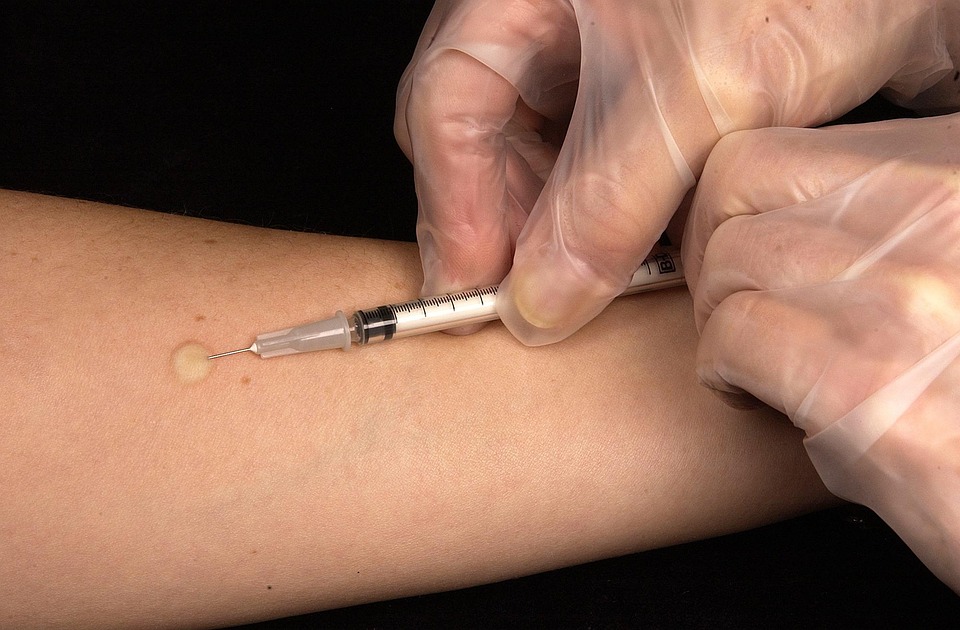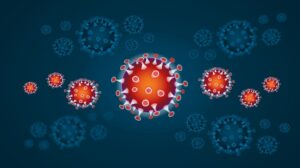The Immune System Explained: Your Body’s Defense Against Illness
The immune system is one of the most sophisticated and intricate systems in the human body. Its primary purpose is to protect us from pathogens, such as viruses, bacteria, and parasites, while also recognizing and eliminating cells that become abnormal, such as cancer cells. Understanding how the immune system works is essential for comprehending a range of health issues and the body’s overall function. In this article, we will dive deep into the different components of the immune system, how they work together, and the various factors that can affect immune function.
1. Overview of the Immune System
The immune system is categorized broadly into two types: innate immunity and adaptive immunity.
1.1 Innate Immunity
Innate immunity is the body’s first line of defense. It is non-specific and responds rapidly to pathogens. Innate immune responses include physical barriers, such as skin and mucous membranes, as well as immune cells that act quickly when an invader is detected.
Key Components of Innate Immunity
-
Physical Barriers: The skin serves as a physical barrier to pathogens, while mucous membranes in the respiratory and gastrointestinal tracts trap pathogens and prevent their entry.
-
Immune Cells: Various types of immune cells are involved in the innate immune response, including:
- Phagocytes: Such as macrophages and neutrophils that engulf and destroy pathogens.
- Natural Killer (NK) Cells: These cells can recognize and kill virus-infected cells and tumor cells.
- Molecules: Factors such as cytokines and complement proteins play crucial roles in signaling and attacking pathogens.
1.2 Adaptive Immunity
If pathogens evade the innate immune response, the adaptive immune system provides a more specialized and long-lasting response.
Key Components of Adaptive Immunity
-
B Cells: These cells are responsible for producing antibodies, which can neutralize pathogens and mark them for destruction.
-
T Cells: There are several types of T cells, including:
- Helper T Cells (Th): Assist other immune cells in mounting a response.
- Cytotoxic T Cells (Tc): Destroy infected or cancerous cells.
- Memory Cells: After an infection is cleared, some B and T cells remain in the body as memory cells, providing long-lasting immunity against future infections by the same pathogen.
2. How the Immune System Works
Understanding the interaction between the components of the immune system is crucial for grasping how it protects the body.
2.1 Recognition of Pathogens
The immune system uses various receptors to identify potential threats. Pathogen-associated molecular patterns (PAMPs) are recognized by pattern recognition receptors (PRRs) on immune cells. For instance, Toll-like receptors (TLRs) on macrophages can detect bacterial elements, prompting an immune response.
2.2 Activation of the Immune Response
Once a pathogen is recognized, the innate immune system activates and begins to respond:
-
Inflammation: This is a key feature of the innate immune response, characterized by redness, heat, swelling, and pain. Inflammation helps to isolate and eliminate pathogens.
-
Cytokine Production: Immune cells release signaling molecules called cytokines, which can recruit more immune cells to the site of infection.
- Phagocytosis: Immune cells like macrophages and neutrophils engulf pathogens to destroy them.
If the innate immune response is insufficient, the adaptive immune system is activated, leading to the following:
-
Antigen Presentation: Phagocytes that have ingested pathogens will present parts of these antigens (pieces of the pathogen) on their surfaces.
-
T Cell Activation: Helper T cells recognize these antigens and activate B cells and cytotoxic T cells.
-
B Cell Activation: Activated B cells generate antibodies that specifically bind to the pathogen, neutralizing it and marking it for destruction.
- Memory Formation: After the infection is cleared, memory cells remain, leading to faster and more effective responses upon subsequent exposure to the same pathogen.
3. Factors Affecting Immune Health
Various factors can influence the functioning of the immune system, including lifestyle choices, age, and environmental factors.
3.1 Nutrition
A well-balanced diet is crucial for maintaining a healthy immune system. Micronutrients such as vitamins A, C, D, and E, as well as minerals like zinc and selenium, all play significant roles in immune function.
-
Vitamin C: Known for its antioxidant properties, vitamin C is essential for the growth and function of immune cells.
-
Vitamin D: This vitamin helps modulate the immune response and has been linked to reduced susceptibility to infections.
- Zinc: This mineral is vital for the development and function of immune cells, particularly T and B cells.
3.2 Exercise
Regular moderate exercise can boost the immune system by enhancing the circulation of immune cells and promoting overall health.
-
Immune Cell Circulation: Exercise increases the circulation of immune cells, allowing them to patrol the body more effectively.
- Reduced Inflammation: Physical activity can reduce the chronic inflammation associated with various diseases.
3.3 Stress
Chronic stress has been shown to negatively impact immune function. Increased levels of stress hormones, such as cortisol, can lead to a weakened immune response.
- Cortisol Effects: Elevated cortisol levels can inhibit the production of cytokines and impair the function of immune cells.
3.4 Sleep
Adequate sleep is essential for optimal immune functioning. Sleep deprivation can hinder the production of protective cytokines and antibodies.
- Cytokine Production: Sleep helps regulate the production of immune-related substances, which are crucial for an effective immune response.
4. Common Immune Disorders
Understanding how the immune system can sometimes malfunction is crucial for appreciating its complexity.
4.1 Autoimmune Disorders
In autoimmune diseases, the immune system mistakenly attacks the body’s own cells, perceiving them as threats.
- Examples: Conditions such as rheumatoid arthritis, lupus, and multiple sclerosis fall into this category.
4.2 Allergies
Allergies occur when the immune system overreacts to harmless substances like pollen, dust, or certain foods.
- IgE Response: In allergic reactions, IgE antibodies are produced in response to allergens, leading to symptoms such as hives, difficulty breathing, or anaphylaxis.
4.3 Immunodeficiency Disorders
These disorders occur when the immune system is unable to mount a proper response.
-
Primary Immunodeficiencies: These are typically genetic and can lead to frequent infections. Examples include X-linked agammaglobulinemia and Severe Combined Immunodeficiency (SCID).
- Secondary Immunodeficiencies: These can be acquired due to factors such as HIV infection, malnutrition, or certain medications.
5. The Role of Vaccination
Vaccination is one of the most effective means of harnessing the power of the immune system. By exposing the body to a harmless part of a pathogen, vaccines stimulate the production of memory cells without causing disease.
5.1 How Vaccines Work
Vaccines can either contain weakened forms of the pathogen, pieces of the pathogen (like proteins), or genetic material that instructs cells to produce antigens.
- Memory Formation: Following vaccination, the immune system creates memory B and T cells, ensuring a quicker response upon future exposure to the actual pathogen.
5.2 Impact of Vaccination on Public Health
Vaccination has led to the eradication of smallpox and significant reductions in diseases such as polio and measles.
- Herd Immunity: Widespread vaccination can contribute to herd immunity, safeguarding those who cannot be vaccinated due to medical reasons.
6. Emerging Research and the Future of Immunology
Immunology is a rapidly advancing field, with ongoing research transforming our understanding of the immune system.
6.1 Immunotherapy
Immunotherapy is a revolutionary treatment approach, particularly in cancer therapy, that harnesses the immune system to fight cancer cells.
- Checkpoint Inhibitors: These drugs help remove the "brakes" on the immune system, allowing it to attack tumors more effectively.
6.2 Microbiome and Immunity
The gut microbiome plays a significant role in influencing immune response. A diverse and balanced gut microbiota can enhance immune health.
- Probiotics: These beneficial bacteria have been shown to modulate immune responses and help prevent certain diseases.
6.3 Personalized Medicine
The future of immunology may include personalized medicine approaches, where therapies are tailored to an individual’s immune profile, leading to more effective treatments.
Conclusion
The immune system is a remarkable defense mechanism that is vital for maintaining health and well-being. Understanding how the immune system operates, the factors that influence it, and the advancements in immunotherapy and vaccination can empower individuals to take proactive steps to support their immune health. As research continues to advance, our understanding of the complexities of the immune system will likely lead to innovative approaches in medicine, potentially transforming the landscape of health care in the years to come.
Modern Footnote Sources:
- Janeway, C., et al. (2001). Immunobiology: The Immune System in Health and Disease. Garland Science.
- Murphy, K., & Weaver, C. (2016). Janeway’s Immunobiology. Garland Science.
- Abreu, M. T., & Malnick, H. (2020). The Role of the Immune System in Gastrointestinal Health and Disease. Gastroenterology, 159(1), 36-57.
- Vella, A. T., & Waggoner, S. N. (2021). Immunotherapy: Targeting the Immune System to Treat Disease. Nature Reviews Immunology, 21(1), 1-17.
- Hill, D. A., & Artis, D. (2010). Intestinal Homeostasis and Its Regulation by the Immune System. Nature Reviews Immunology, 10(6), 437-448.
- Bacher, P., et al. (2020). The Role of Vitamins and Minerals in Immune Function: The Recent Discoveries. Vitamins & Hormones, 112, 139-188.
- Schanler, R. J., & Shulman, R. J. (2010). Nutrition and Immunity. Current Opinion in Pediatric Medicine, 22(3), 300-305.


























Add Comment